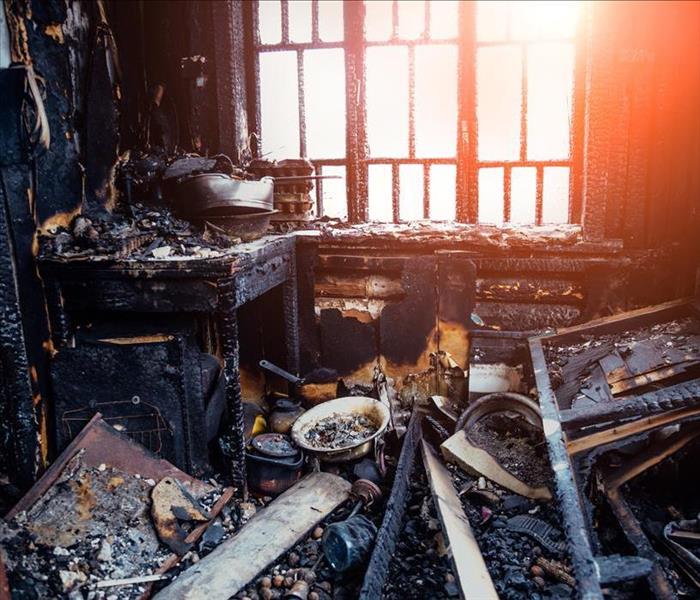READY How Long Can It Take To Complete Fire Restoration In My Voorhees Property?
6/4/2020 (Permalink)
 Let the SERVPRO team mitigate your fire damaged home in Voorhees. They will use the most updated equipment around.
Let the SERVPRO team mitigate your fire damaged home in Voorhees. They will use the most updated equipment around.
With the Resources SERVPRO Offers, You Can Cut Down the Time it Takes to Restore Your Fire Damaged Property
Fire damage restoration may involve the removal of materials from your property or reversing damages caused by flames, heat, and smoke from a fire. The restoration process can take a few days or stretch out for several months before all traces of an incident disappear from your property. SERVPRO helps Voorhees property owners by availing skilled technicians and other resources necessary to complete the process with minimal complications, "Like it never even happened."
When should I expect a shorter fire restoration process in my Voorhees home?
Fixing a Voorhees property after fire damage takes several steps, which can be categorized into:
- Emergency or containment
- Teardown and rebuilding
- Cleanup and drying
- Deodorization
Emergency steps might range from moving valuables away from the property, boarding up openings on the roof or walls, to the application of oil or other protective products on surfaces to protect them from corrosive residues. The actual steps necessary depend on the intensity of the fire, so minor fire incidents can be resolved faster. For instance, stove flare-ups or other localized damages might only require cleanup and deodorization to resolve.
Does the initial response affect the speed of the restoration?
Before the restoration processes start in earnest, it is common to do some assessment of the damage and also take steps that help in safeguarding materials. Although such processes may seem trivial, how they are done can affect the main restoration processes. When our SERVPRO technicians assess your loss site, we try to establish issues such as:
- The type of smokes residues on surfaces
- The materials affected by the fire and firefighting processes
- Whether there are salvageable items
An assessment helps reveal information that aids in planning the restoration process rather than hoping that no challenges develop later on. Some of the useful information includes establishing whether there are stubborn deposits such as fuel oil soot or protein residues deposited on surfaces since such materials require special cleaning approaches. The assessment also helps establish whether there are many unsalvageable materials at the loss site and thus making the appropriate disposal plans, including bringing enough trashcans and heavy-duty plastic bags to hold the waste before disposal. Combining these minor actions helps ensure convenience and thus speeds up the restoration process.
Which cleaning techniques work faster?
A wide range of cleaning methods can help remove residues, stains, and charring from surfaces or contents affected by the fire. Cleaning methods can be narrowed down into four main categories:
- Chemical action
- Mechanical action
- Lubrication
- Dispersion and suspension
Although different methods have varying degrees of effectiveness, it is hard to pick a single method as the fastest because factors such as the type or condition of materials and the type of soils involved influence the outcome. From the advanced training our SERVPRO technicians have, we can assess a situation and pick a method that can produce results fast. For instance, cleaning unfinished wood in cabinets or structural supports can take considerable time because such surfaces are porous allowing residue penetration. The rough surfaces also reduce the effectiveness of conventional cleaning processes, such as wiping with cleaning sponges.
Our technicians overcome these challenges by using unique approaches. If we decide to wet clean such surfaces, we use denatured alcohol, which helps loosen residues while preventing penetrating through the pores of the material. We also use soda blasting, especially when cleaning trusses or other structural supports removing charring and stubborn residue layers faster.
What determines the level of difficulty when removing residues?
Restoring surfaces to their preloss state can take longer if the residues do not come off quickly during cleaning. Residues adhere strongly to surfaces for various reasons. In scorching fires, air movements are more turbulent, so they push smoke residues at higher velocities against surfaces that lead to impingement of residues. Higher temperatures also open up pores on surfaces driving soils deeper into the surface.
Another factor that can lead to stubborn residues is the type of materials the fire affects. Synthetic materials produce wet smoke residues, which are challenging to deal with during cleaning. Such challenges can lengthen the restoration time. Our SERVPRO technicians utilize a wide scope of techniques to overcome the challenges, including using specially formulated cleaning agents and using automated tools, which offer better agitation.
Any uncertainty about restoring your fire-damaged property is easier to address with an experienced team by your side. Call SERVPRO of Haddon Heights / Voorhees at (856) 566-3388 to help. We're Faster To Any Size Disaster.




 24/7 Emergency Service
24/7 Emergency Service